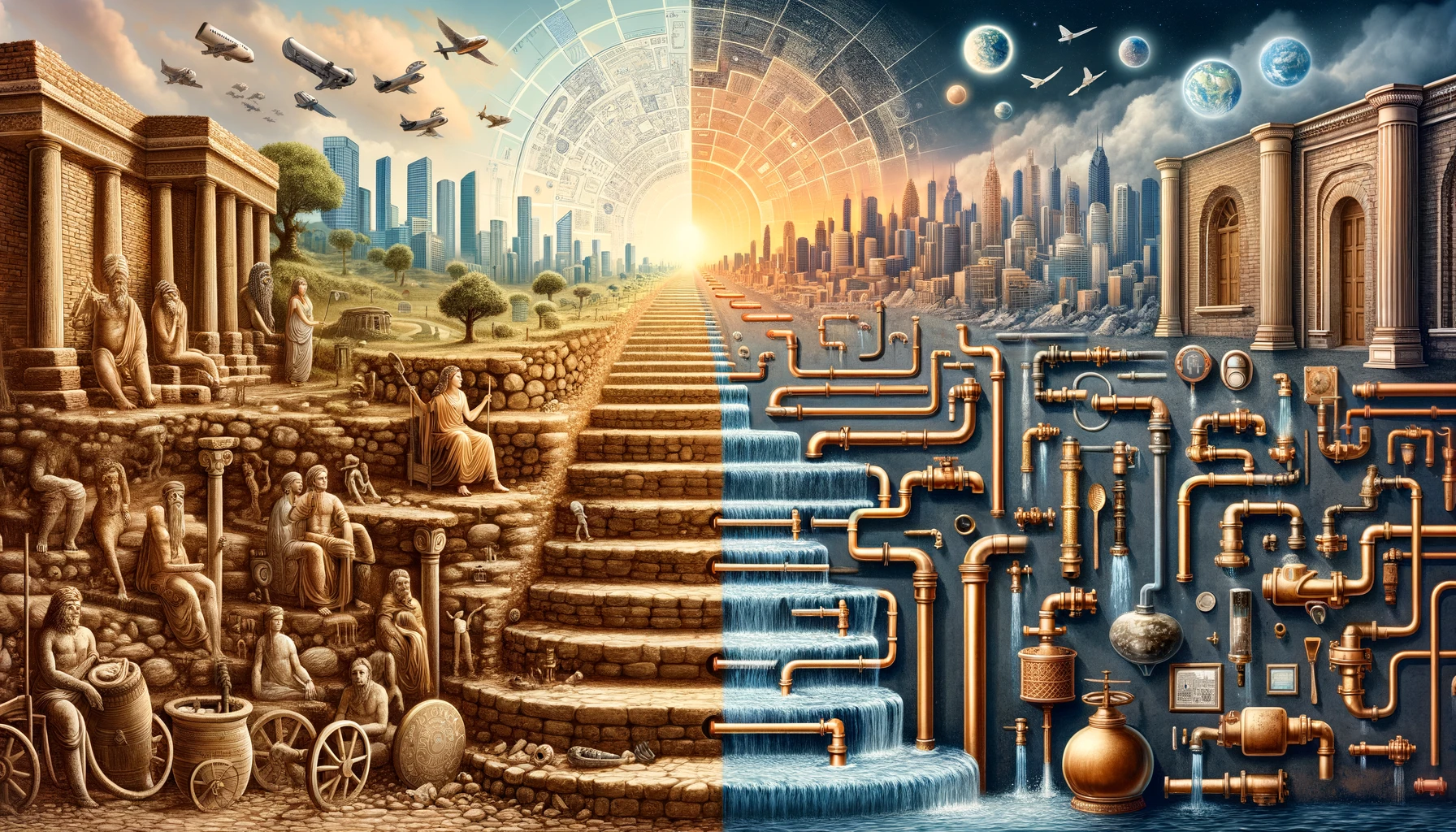Plumbing, an indispensable component of urban living, has a rich history that spans millennia and reflects the technological advances and cultural shifts of societies. The origins of plumbing trace back to ancient civilizations, where it emerged not only as a functional necessity but also as a marker of societal advancement and prestige.
Ancient Foundations
The Indus Valley Civilization (3300–1300 BCE) is among the earliest known cultures to have developed sophisticated plumbing systems. Their urban centers featured built-in drainage and water supply systems, illustrating an early understanding of water management’s importance to public health. However, it was the Roman Empire that revolutionized plumbing on a grand scale. The Romans constructed extensive aqueducts, capable of transporting water over long distances, and sewer systems that prevented urban areas from water-borne diseases. Public bathhouses, supplied with fresh running water, became centers of social life and a testament to the empire’s engineering prowess.
Medieval Stagnation and Renaissance Recovery
Following the fall of the Roman Empire, plumbing technology suffered a significant setback in Europe. During the medieval period, sanitary conditions deteriorated as knowledge of water management was lost, leading to frequent outbreaks of diseases like cholera and the plague. It wasn’t until the Renaissance that significant progress resumed. Innovations during this period included the development of closed sewer systems and the reintroduction of indoor plumbing in wealthier homes.
Industrial Age Innovations
The Industrial Revolution brought about transformative changes to plumbing. The creation of modern sewage systems in the 19th century, driven by the need to control disease outbreaks in growing industrial cities, marked a critical turning point. Moreover, the invention of the flush toilet in 1596 by Sir John Harington, and its subsequent popularization in the 19th century by Thomas Crapper, revolutionized home sanitation, significantly enhancing the quality of life.
Contemporary Advances and the Future
In the 21st century, the focus of plumbing has shifted towards sustainability and environmental conservation. Technological advancements such as touchless faucets, low-flow toilets, and smart water systems demonstrate the industry’s response to the global water crisis. These technologies not only conserve water but also reduce the overall energy costs associated with heating and transporting water.
Greywater systems and rainwater harvesting are now becoming more mainstream, integrated into residential and commercial buildings to further optimize water use. Looking ahead, the future of plumbing holds potential breakthroughs in material science, such as the development of bacteria-resistant pipes and more efficient recycling methods that could further mitigate the environmental impact of human settlements.
Conclusion
The journey of plumbing from the ancient world to the present encapsulates a story of human ingenuity and adaptability. As the global community faces unprecedented environmental challenges, the evolution of plumbing technologies remains a critical element in our pursuit of a sustainable future. By integrating advanced, eco-friendly technologies, the field of plumbing continues to play a vital role in shaping healthy, efficient, and sustainable living environments.
This extended exploration offers a deeper understanding of how plumbing has influenced health, architecture, and environmental sustainability throughout history.

